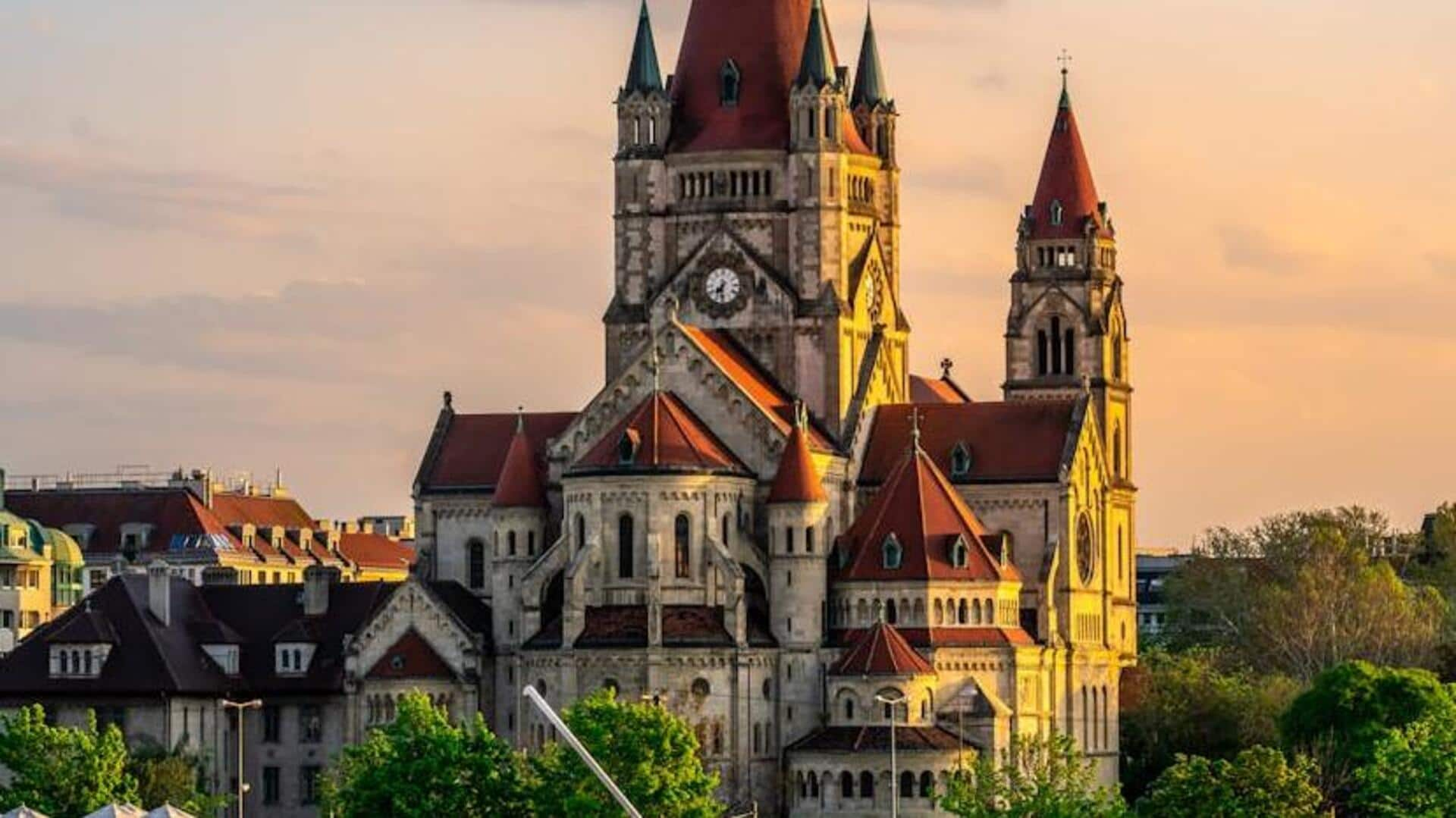Vienna's Art Nouveau adventure: Top travel recommendations
What's the story
Vienna, the capital of Austria, is a city deeply immersed in history, culture, and unparalleled art.
Among its diverse artistic movements, Art Nouveau notably stands out for its distinctive style and profound influence.
This guide delves into the enigmatic world of Vienna's Art Nouveau, guiding you through both hidden gems and iconic landmarks that celebrate this exquisite art form, showcasing its beauty and elegance.
Recommendation 1
Stroll through Secession Building
The Secession Building, emblematic of Viennese Art Nouveau, features a distinctive white facade and golden dome.
Inside, it houses Gustav Klimt's Beethoven Frieze, a remarkable mural encircling the walls.
This building was conceived as a space where artists could exhibit their works free from conventional restrictions, making it a vital destination for those passionate about art.
Recommendation 2
Discover Karlsplatz Stadtbahn Station
Designed by Otto Wagner, the Karlsplatz Stadtbahn Station is an iconic example of functional yet elegant Art Nouveau architecture.
Now functioning as a museum and event space, it showcases Wagner's attention to detail and his ability to blend utility with beauty.
The ornate pavilions are adorned with marble slabs and decorative tiles that capture the essence of Vienna's artistic heritage.
Recommendation 3
Explore the Majolica House
Another gem by Otto Wagner, The Majolica House stands out with its floral facade made entirely of majolica tiles (ceramic tiles glazed in vibrant colors).
Located on Linke Wienzeile Street, this residential building is a testament to Wagner's innovative use of materials and color in architecture.
Its facade blooms with vivid flowers all year round, offering a picturesque sight amidst the urban landscape.
Recommendation 4
Wander through Hofpavillon Hietzing
The Hofpavillon Hietzing is an often-overlooked masterpiece designed by Otto Wagner for Emperor Franz Joseph I.
This imperial court pavilion served as an exclusive station for the emperor and his entourage when traveling on the Vienna city railway.
Its luxurious interior features intricate woodwork, stained glass windows, and ornamental details that exemplify royal elegance combined with Art Nouveau aesthetics.
